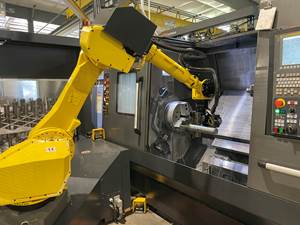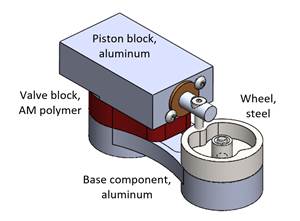The Importance Of Skilled Trainers
Anyone who has spent time in any industry recognizes the need for training. Multi-skilled employees provide the flexibility organizations need to meet today’s business challenges. One of the keys to effective training is finding employees in your organization who are skilled at training others and comfortable in doing so.
Share






What makes someone a good trainer? Certainly experience in doing a job is part of it; however, a good trainer needs more than just experience. Other skills need to be part of an effective trainer’s “bag of tricks.” These include:
• Strong communication—Without good communication, nothing gets done. This is especially true in training. A good trainer must not only understand the information that needs to be communicated, but also deliver this information and ensure that it is understood. It is not enough to inquire if the trainee understands because more often than not, the trainee will respond in the affirmative regardless of whether he or she truly does understand. Therefore, the trainer must make a greater effort to ensure that learning is taking place. One way to do this is to pose thoughtful questions that require more than a “yes” or “no” answer. For example, the trainer can ask: “So, what is the first thing you will do when you start this job?” or “What would you do if this happens?” The trainee’s responses to these types of questions will demonstrate whether he or she has learned enough to do the job.
• The ability to monitor and evaluate employee performance—In simple terms, once a trainer has trained an employee, that trainer must be able to recognize if the employee is using the newly acquired skills effectively. This requires knowing what the employee should be doing, observing if the employee is using the acquired skills and recognizing any situational constraints that may be preventing the employee from doing the job. It is important for the trainer to be able to recognize when any of these situational constraints arise, as these may be the real cause of the employee not being able to do a job (rather than the employee’s skill level). For example, an employee may be trained to operate a machine and may be doing everything right, but parts still are not being made properly. A situational constraint such as a machine defect might be is the real cause of the bad parts.
• Organization—A good trainer needs to exhibit organization skills. These skills go beyond the need to keep his or her desk clean (something with which even some well-organized people struggle). Moreover, the trainer’s most important organizational skill is the ability to prepare training sessions in advance using a well-thought-out approach that gives trainees the greatest chance of success. Although even the best trainer cannot prepare for every possible question or every problem an employee may encounter during training, a good trainer needs some advance preparation. Training someone “on the fly” rarely works and actually shows a lack of commitment on the part of the trainer.
• The ability to recognize the level of training required by employees—A number of years ago, behavioral researchers Blanchard and Hersey developed the Situational Leadership matrix, which stressed that managers needed to vary their leadership style depending on the level of skill exhibited by their employees. Likewise, a good trainer needs to evaluate the employees’ skill levels in order to deliver the most effective type of training. As in leadership, training styles can be divided into two major categories: directive and supportive.
The directive approach provides much more hand-holding. The supportive approach passes more responsibility for successful training to the trainee. Based on the skill level of the employee, the trainer can tailor the training approach as follows:
When selecting people to train others in your organization, choose those who exhibit as many of the skills described above as possible. The results will be better and you will get a greater return on your training dollars.
Related Content
Same Headcount, Double the Sales: Successful Job Shop Automation
Doubling sales requires more than just robots. Pro Products’ staff works in tandem with robots, performing inspection and other value-added activities.
Read MoreSolve Worker Shortages With ACE Workforce Development
The America’s Cutting Edge (ACE) program is addressing the current shortage in trained and available workers by offering no-cost online and in-person training opportunities in CNC machining and metrology.
Read MoreInside Machineosaurus: Unique Job Shop with Dinosaur-Named CNC Machines, Four-Day Workweek & High-Precision Machining
Take a tour of Machineosaurus, a Massachusetts machine shop where every CNC machine is named after a dinosaur!
Read MoreAddressing the Manufacturing Labor Shortage Needs to Start Here
Student-run businesses focused on technical training for the trades are taking root across the U.S. Can we — should we — leverage their regional successes into a nationwide platform?
Read MoreRead Next
Machine Shop MBA
Making Chips and 91 ”∆µÕ¯’挀 are teaming up for a new podcast series called Machine Shop MBA—designed to help manufacturers measure their success against the industry’s best. Through the lens of the Top Shops benchmarking program, the series explores the KPIs that set high-performing shops apart, from machine utilization and first-pass yield to employee engagement and revenue per employee.
Read MoreLast Chance! 2025 Top Shops Benchmarking Survey Still Open Through April 30
Don’t miss out! 91 ”∆µÕ¯’挀's Top Shops Benchmarking Survey is still open — but not for long. This is your last chance to a receive free, customized benchmarking report that includes actionable feedback across several shopfloor and business metrics.
Read MoreAMRs Are Moving Into Manufacturing: 4 Considerations for Implementation
AMRs can provide a flexible, easy-to-use automation platform so long as manufacturers choose a suitable task and prepare their facilities.
Read More



















